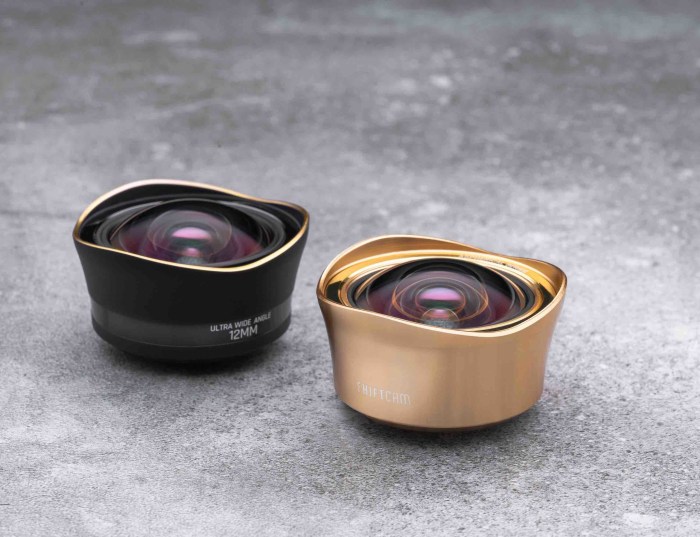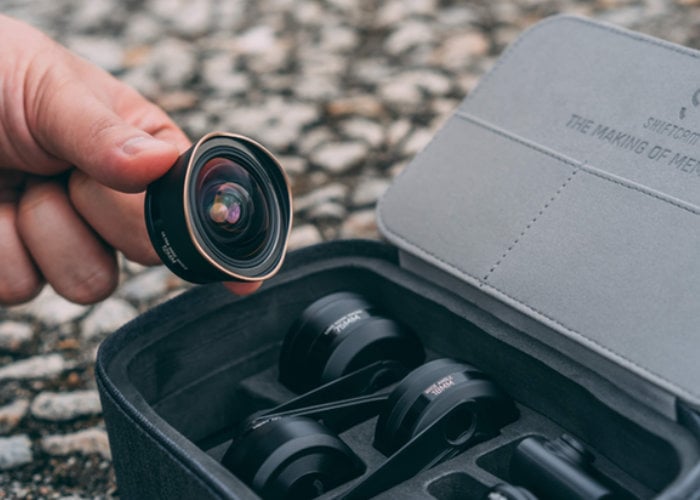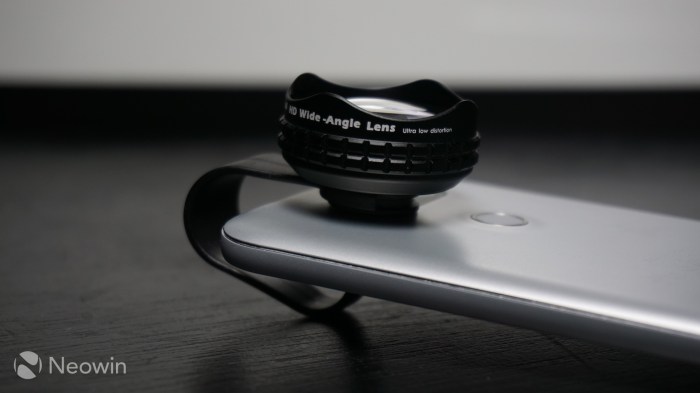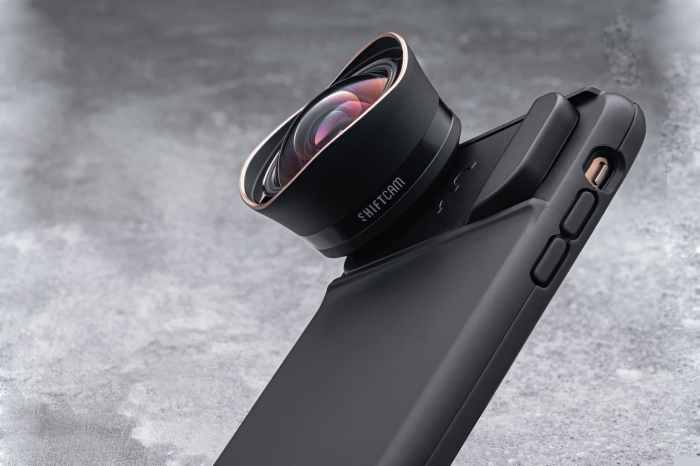Achieving sharp focus with ultra wide camera lenses on smartphones – Achieving sharp focus with ultra-wide camera lenses on smartphones presents unique challenges. While these lenses offer expansive fields of view, capturing crisp images requires understanding the interplay of aperture, distance, lighting, and image stabilization. This exploration delves into the technical aspects of ultra-wide lenses, offering practical tips and techniques to enhance sharpness in your smartphone photography.
From mastering camera settings and post-processing techniques to leveraging computational photography and understanding compositional strategies, we’ll navigate the intricacies of capturing stunning ultra-wide shots. We’ll also examine the limitations of ultra-wide lenses and discuss methods to mitigate these challenges, enabling you to produce sharper, more professional-looking images.
Understanding Ultra-Wide Smartphone Camera Lenses

Ultra-wide lenses have become increasingly common in smartphone cameras, offering a dramatically different perspective compared to traditional lenses. Understanding their technical differences, advantages, and limitations is key to capturing sharp, high-quality images. This section delves into the specifics of ultra-wide lenses and their impact on image sharpness.
Ultra-wide lenses are characterized by their significantly wider field of view compared to standard lenses. This wider perspective allows for capturing more of a scene, ideal for landscapes, architecture, and group photos. The technical difference lies primarily in the lens’s focal length and its resulting angle of view. Standard smartphone lenses typically have a focal length around 26-35mm (in 35mm equivalent terms), while ultra-wide lenses boast much shorter focal lengths, often in the range of 13-24mm. This shorter focal length results in a much wider angle of view, typically around 120 degrees or more.
Technical Differences Between Ultra-Wide and Standard Lenses, Achieving sharp focus with ultra wide camera lenses on smartphones
The fundamental difference between ultra-wide and standard lenses is their focal length and the resulting field of view. Ultra-wide lenses use a shorter focal length to capture a much broader area than a standard lens. This necessitates different lens designs to minimize distortion and maintain image quality across the entire frame. Standard lenses, with their longer focal lengths, often have simpler optical designs. Additionally, ultra-wide lenses frequently employ more complex lens elements to correct for distortion, a common side effect of their wide angle of view. This complexity contributes to their cost and size.
Advantages and Disadvantages of Ultra-Wide Lenses for Sharp Focus
Ultra-wide lenses present both advantages and disadvantages regarding sharp focus. One advantage is the ability to capture more of the scene, potentially including elements that would be cut off by a standard lens. However, achieving sharp focus across the entire ultra-wide frame can be challenging. The wider angle of view means that the lens has to cover a much larger area, making it harder to maintain consistent sharpness, especially at the edges of the image. Furthermore, the increased lens complexity, often including more elements and a wider aperture, can sometimes introduce aberrations that reduce image sharpness.
Image Sensor Size and Sharpness in Ultra-Wide Smartphone Cameras
The size of the image sensor plays a crucial role in image sharpness, particularly in ultra-wide lenses. Larger sensors generally capture more light and offer better low-light performance, contributing to improved sharpness and reduced noise. However, fitting a larger sensor into a smartphone with an ultra-wide lens presents significant design challenges, resulting in smaller sensor sizes being more common in ultra-wide camera modules compared to main (standard) cameras. A smaller sensor means each pixel captures less light, potentially leading to increased noise and reduced sharpness, especially in low-light conditions. This trade-off between a wider field of view and sensor size is a key consideration in ultra-wide smartphone camera design. For example, comparing a flagship phone with a larger sensor in its ultra-wide module to a budget phone with a smaller sensor will often reveal a difference in image quality, with the flagship showing superior sharpness and detail.
Post-Processing Techniques for Enhancing Sharpness

Ultra-wide smartphone photos, while offering stunning perspectives, often suffer from a perceived lack of sharpness compared to images from standard lenses. This is due to a combination of factors, including lens distortion and the increased field of view. Fortunately, post-processing techniques can significantly improve the sharpness and overall quality of your ultra-wide shots. Effective editing can rescue an otherwise blurry image, revealing hidden detail and enhancing the impact of your photography.
Post-processing offers a powerful way to refine your ultra-wide images, compensating for limitations in the camera hardware. By carefully applying sharpening and noise reduction tools, you can achieve a final product that accurately represents the scene you captured. Remember that subtlety is key – over-processing can lead to unnatural artifacts and a loss of detail.
Sharpening Tools and Techniques
Mobile editing apps offer a range of sharpening tools, typically adjustable via a slider. These tools generally work by increasing the contrast between adjacent pixels, thereby enhancing the perception of detail. However, excessive sharpening can introduce unwanted artifacts, such as halos around edges and a grainy appearance. A good approach is to start with a low sharpening value and gradually increase it until you achieve a pleasing result. Observe the image closely at 100% zoom to detect any artifacts. Many apps also provide options for controlling the radius (area affected by sharpening) and threshold (sensitivity to edges), allowing for more precise control over the sharpening process. For example, Snapseed offers a selective sharpening tool that lets you target specific areas needing enhancement, preventing over-sharpening of the entire image. Another effective technique is to apply sharpening only to specific areas that lack detail, leaving sharper areas untouched.
Noise Reduction Techniques
Ultra-wide images, particularly those taken in low-light conditions, are prone to noise – a grainy or speckled appearance. Mobile editing apps offer noise reduction tools that effectively smooth out this grain while preserving important details. Again, moderation is key. Overly aggressive noise reduction can result in a loss of detail and a softer, less natural look. Many apps offer adjustable sliders to control the strength of the noise reduction. Experiment to find the optimal balance between noise reduction and detail preservation. Some advanced apps may offer more sophisticated noise reduction algorithms that are better at preserving fine details. Consider exploring these options if you frequently shoot in low light. A useful strategy is to reduce noise first, then apply sharpening. This allows you to focus on the primary issue of noise before dealing with sharpness.
Artifact Reduction
Ultra-wide lenses are more susceptible to lens distortion, leading to artifacts such as barrel distortion (edges bulging outwards) and chromatic aberration (color fringing). While you can’t completely eliminate these using just sharpening, many editing apps offer tools to correct these issues. Barrel distortion correction will straighten lines, making the image appear more natural. Chromatic aberration correction will remove color fringing, improving image clarity. These corrections often work best before applying sharpening and noise reduction. Applying these corrections before any sharpening enhances the overall effectiveness of the sharpening process, as it works on a cleaner image base.
Composition and Subject Matter for Sharp Ultra-Wide Shots: Achieving Sharp Focus With Ultra Wide Camera Lenses On Smartphones
Mastering ultra-wide photography isn’t just about technical proficiency; it’s about understanding how to leverage the lens’s unique perspective to create compelling images. Sharpness is crucial, but equally important is the strategic placement of your subject and the careful consideration of your composition to highlight the strengths of the ultra-wide format.
Effective composition with ultra-wide lenses often involves utilizing the lens’s expansive field of view to create a sense of scale and immersion. Subjects can be emphasized by their placement within the frame, while leading lines and other compositional elements guide the viewer’s eye. The vast background, a defining characteristic of ultra-wide photography, should be carefully considered to either complement or contrast with the primary subject. A cluttered background can detract from the image, while a carefully chosen backdrop can significantly enhance the overall impact.
Leading Lines and Converging Perspectives
Leading lines are a powerful compositional tool in any photography, but they become particularly effective with ultra-wide lenses. Imagine a long, straight road disappearing into the distance, its lines converging towards a vanishing point. This creates a strong sense of depth and draws the viewer’s eye through the image. Similarly, architectural elements like rows of buildings or pathways can serve as effective leading lines. The ultra-wide lens captures the dramatic convergence of these lines, enhancing the perspective and creating a dynamic composition. A sharp focus across the entire image is essential to showcase the details of these leading lines and the overall scene.
Subject Placement and Scale
The expansive field of view offered by ultra-wide lenses allows for creative subject placement. Instead of centering your subject, consider placing it off-center, using the rule of thirds to create a more visually interesting composition. This technique works especially well when photographing landscapes, allowing you to include a prominent foreground element alongside a vast background. For example, a solitary tree in the foreground of a sprawling mountain range creates a powerful sense of scale and draws the viewer’s eye across the image. The sharpness of both the foreground and background elements is crucial for this effect.
Background Considerations and Context
The background is a significant element in ultra-wide photography. Unlike telephoto lenses which compress perspective, ultra-wide lenses emphasize the vastness of the background. Therefore, careful selection of the background is essential. A cluttered or distracting background can detract from your subject, while a complementary background can enhance the overall impact. For example, photographing a vibrant flower against a blurred but still visually interesting background can create a striking contrast. The sharpness of the flower contrasts beautifully with the softer focus of the background, guiding the viewer’s eye to the main subject.
Framing and Capture Tips for Different Scenarios
Understanding the optimal framing techniques for various scenarios is key to achieving sharp ultra-wide shots.
- Landscapes: Employ leading lines to draw the viewer’s eye through the scene. Ensure the horizon is level and use a tripod for maximum sharpness, especially in low-light conditions. Consider using a low shooting angle to emphasize the scale and grandeur of the landscape.
- Architecture: Capture the architectural lines and details. Use a tripod to avoid camera shake and maintain sharpness, particularly when shooting tall buildings. Experiment with different perspectives to reveal hidden architectural details.
- Portraits: While not traditionally associated with ultra-wide lenses, they can be used creatively for portraits. Keep the subject at a distance to minimize distortion, use a shallow depth of field if your phone allows, and focus on capturing the environment surrounding the subject to provide context. Ensure the subject is well-lit to prevent blurring from low light conditions.
The Role of Software in Achieving Sharpness

Modern smartphone cameras rely heavily on sophisticated software to enhance image quality, particularly with ultra-wide lenses which often struggle with maintaining sharpness across the entire frame due to lens distortion and physical limitations. Computational photography plays a crucial role in mitigating these challenges and delivering sharper, more appealing ultra-wide images.
Computational photography algorithms employ various techniques to improve sharpness. These algorithms analyze the raw image data, identifying areas of blur or distortion. They then use this information to apply corrections, such as sharpening filters, noise reduction, and lens distortion correction. This process often involves complex mathematical calculations and machine learning techniques to achieve optimal results. The effectiveness of these algorithms varies significantly depending on the specific implementation and the processing power of the smartphone’s processor.
Image Processing Pipelines and Their Impact on Sharpness
Different smartphone manufacturers utilize different image processing pipelines, which are essentially the sequences of algorithms applied to raw image data. These pipelines can significantly influence the final image’s sharpness and overall quality. Some pipelines prioritize speed, resulting in quicker processing times but potentially sacrificing some sharpness. Others prioritize image quality, applying more computationally intensive algorithms to enhance detail and reduce noise, leading to sharper images but potentially longer processing times. For example, a pipeline that heavily emphasizes noise reduction might inadvertently soften fine details, resulting in a less sharp image. Conversely, a pipeline focused on sharpening might introduce artifacts or amplify noise in low-light conditions. The choice of pipeline directly impacts the trade-off between speed, sharpness, and overall image quality.
AI-Powered Features for Enhanced Sharpness
Artificial intelligence (AI) is increasingly used in smartphone cameras to improve sharpness. AI-powered features, such as scene detection and multi-frame processing, can significantly enhance the sharpness of ultra-wide images. Scene detection algorithms identify the type of scene being photographed (e.g., landscape, portrait, close-up) and adjust the image processing pipeline accordingly to optimize sharpness for that specific context. Multi-frame processing techniques combine multiple images captured in quick succession to create a single, sharper image by reducing noise and improving detail. For instance, Google’s Pixel phones utilize advanced AI algorithms to enhance sharpness and detail in low-light conditions, resulting in surprisingly sharp images even in challenging lighting environments. Apple’s computational photography engine similarly leverages AI to improve sharpness and dynamic range, creating highly detailed ultra-wide images with reduced noise. These AI-powered features often go beyond simple sharpening filters, offering more nuanced and context-aware improvements to image quality.
Limitations of Ultra-Wide Lenses and Sharpness

Ultra-wide lenses, while offering expansive fields of view, present unique challenges in achieving consistent sharpness across the entire image. Their design inherently compromises sharpness, particularly at the edges of the frame, due to the physics of light bending and lens distortion. Understanding these limitations is crucial for optimizing image quality and managing expectations when using ultra-wide smartphone cameras.
The significant field of view achieved by ultra-wide lenses necessitates a complex lens design to correct for distortion. This complexity, however, introduces limitations in terms of light gathering and the ability to maintain consistent focus across the entire sensor. The edges of the image are often more susceptible to various aberrations, resulting in reduced sharpness, increased distortion, and potential vignetting (darkening of the corners). These effects are amplified as the lens’s field of view widens.
Edge Sharpness Degradation in Ultra-Wide Images
The challenges in achieving edge sharpness stem from several factors. First, the extreme angle of incidence of light rays at the edges of the sensor makes it more difficult for the lens elements to focus light accurately. Secondly, the manufacturing tolerances of the lens elements themselves contribute to imperfections that become more pronounced at the edges. Finally, the inherent difficulty in correcting for distortion at such wide angles often results in compromises in overall image sharpness, especially at the periphery. This is not a failure of the lens, but a fundamental consequence of its design and the physics of wide-angle photography. Consider, for instance, a typical ultra-wide lens with a 120-degree field of view. The extreme angle of light rays reaching the sensor corners necessitates significantly more correction than a standard lens, potentially leading to visible softness in the resulting image.
Mitigating Sharpness Limitations
Several techniques can be employed to minimize the impact of these limitations. Careful focusing is paramount; ensuring the primary subject is in sharp focus will help even if the edges are slightly softer. Post-processing techniques, such as sharpening tools in photo editing software, can help enhance detail in the less sharp areas, though overdoing this can lead to unnatural artifacts. Using a tripod to eliminate camera shake is crucial, as even minor movement is amplified with ultra-wide lenses. Finally, being mindful of composition can help minimize the impact of edge softness. Prioritizing subjects in the central portion of the frame, where sharpness is generally better, can lead to more pleasing results. Smartphones often utilize sophisticated software algorithms to correct for lens distortion and improve sharpness, but these algorithms can only do so much, and limitations will remain.
Mastering the art of sharp ultra-wide smartphone photography involves a blend of technical understanding, practical skills, and creative vision. By carefully considering factors such as aperture, lighting, and composition, and by utilizing the appropriate camera settings and post-processing techniques, you can consistently capture impressive images. Remember, practice and experimentation are key to unlocking the full potential of your smartphone’s ultra-wide lens. Embrace the challenges, refine your techniques, and enjoy the expansive perspectives this lens offers.
Essential FAQs
Can I use ultra-wide lenses for close-up shots?
While not ideal, some ultra-wide lenses allow for close focusing, but expect some distortion. Macro lenses are better suited for close-ups.
How do I reduce lens distortion in ultra-wide photos?
Many smartphones offer in-camera distortion correction. Post-processing software also provides tools for correcting barrel distortion.
Why are my ultra-wide photos blurry in low light?
Low light reduces the amount of light hitting the sensor, resulting in blur. Use a tripod, increase ISO (accepting more noise), or use a longer shutter speed (requiring a stable shot).
What is the best focus mode for ultra-wide photography?
Autofocus is generally sufficient, but consider using manual focus for more precise control, especially in challenging lighting conditions or with specific subjects.
Remember to click top mobile vr apps for iphone to understand more comprehensive aspects of the top mobile vr apps for iphone topic.

